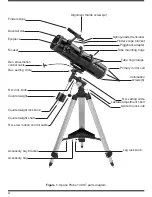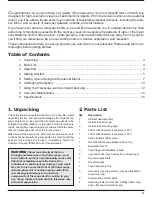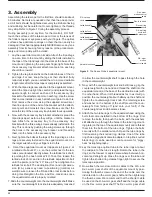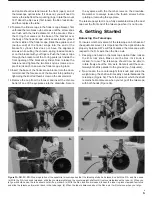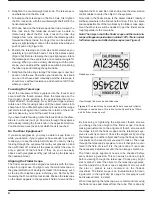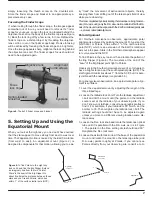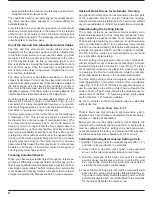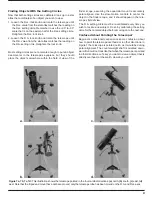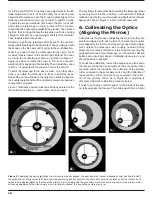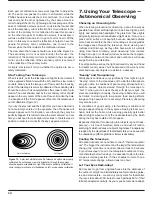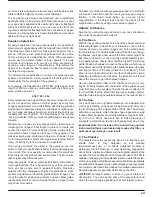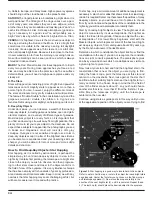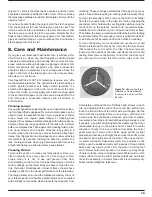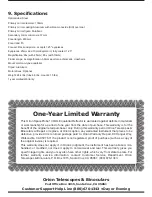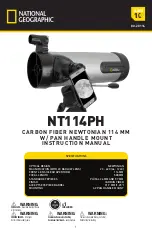
10
One thing you DO NOT do is make any adjustment to the lat-
itude adjustment t-bolt. That will nullify the mount’s polar
alignment. Remember, once the mount is polar aligned, the
telescope should be moved only on the R.A. and Dec. axes.
To point the scope overhead, first loosen the R.A. lock knob
and rotate the telescope on the R.A. axis until the counter-
weight shaft is horizontal (parallel to the ground). Then loosen
the Dec. lock knob and rotate the telescope until it is pointing
straight overhead. The counterweight shaft is still horizontal.
Then retighten both lock knobs.
Similarly, to point the telescope directly south, the counter-
weight shaft should again be horizontal. Then you simply rotate
the scope on the Dec. axis until it points in the south direction.
What if you need to aim the telescope directly north, but at
an object that is nearer to the horizon than Polaris? You can’t
do it with the counterweight down as pictured in Figure 1.
Again, you have to rotate the scope in R.A. so the counter-
weight shaft is positioned horizontally. Then rotate the scope
in Dec. so it points to where you want it near the horizon.
To point the telescope to the east or west, or in other direc-
tions, you rotate the telescope on its R.A. and Dec. axes.
Depending on the altitude of the object you want to observe,
the counterweight shaft will be oriented somewhere between
vertical and horizontal.
Figure 7 illustrates how the telescope will look pointed at the
four cardinal directions — north, south, east, and west
The key things to remember when pointing the telescope is that
a) you only move it in R.A. and Dec., not in azimuth or latitude
(altitude), and b) the counterweight and shaft will not always
appear as it does in Figure 1. In fact, it almost never will!
6. Collimating the Optics
(Aligning the Mirrors)
Collimation is the process of adjusting the mirrors so they are
precisely aligned with each other. Your telescope's optics
were aligned at the factory, and should not need much adjust-
ment unless the telescope was roughly handled during
shipment. Accurate collimation is important to insuring the
peak performance of your telescope, so it should be checked
before each observing session. Collimation is easy to do, and
should be done in daylight.
To check the collimation, remove the eyepiece and look down
the focuser drawtube. You should see the secondary mirror
centered under the drawtube, the reflection of the primary
mirror centered in the secondary mirror, and the reflection of
the secondary mirror (and your eye) centered in the reflec-
tion of the primary mirror, as in Figure 8a. If anything is
off-center, follow the collimation procedure below.
It helps to put a piece of white paper on the inside of the opti-
cal tube opposite the focuser. The white paper forms a bright
Figure 8. Collimating the optics. (a) When the mirrors are properly aligned, the view down the focuser drawtube should look like this. (b) If
the optics are out of alignment, the view might look something like this. (c) Here, the secondary mirror is centered under the focuser, but it
needs to be adjusted (tilted) so that the entire primary mirror is visible. (d) The secondary mirror is correctly aligned, but the primary mirror
still needs adjustment. When the primary mirror is correctly aligned, the eye will be centered, as in (a).
a.
b.
c.
d.


